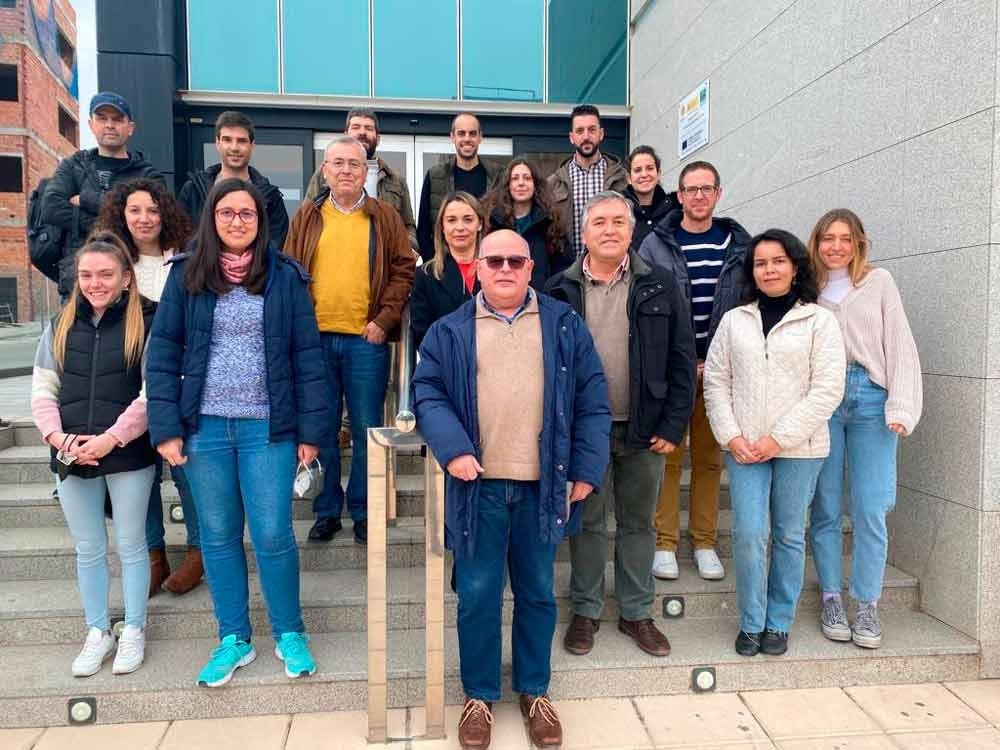Researchers from the Brazilian universities of Jaén and São Paulo have ascertained that vine shoots may produce hydrogen through a non-polluting, fossil fuel-free mechanism. Through their efforts, they are able to produce ecologically beneficial electricity while giving this trash from the wine business a new lease of life.

Group of researchers from the University of Jaén who have participated in the project / Fundación Descubre. Image Credit: Fundación Descubre
Debris, or vine shoots, comprised of approximately 93% of the wastes generated during the grape harvest, have, until this point, been utilized as firewood or to make organic compost. But for a while now, scientists have been searching for ways to utilize trash that, because of its high lignin content, contains compounds that could be highly desirable for other industries like pharmaceuticals or cosmetics.
These experts confirm that biological pre-treatment of the shoots with an enzyme is the best option to start production on an industrial scale in the journal Industrial Crops and Products. Additionally, biomass fermentation yields other products, such as hydrogen, that are used as fuel.
This procedure is more ecologically friendly than others that use chemical or physical reagents because it does not emit harmful compounds or need the recycling of waste materials.
Juan Miguel Romero-García said, “It also increases hydrogen production up to almost 250% compared to other pretreatment methods.”
In this way, the researchers open up new research avenues for the clean and sustainable generation of energy from vine shot biomass using a system that does not require high energy consumption during the process or chemical reagents that need to be managed as waste afterward.
Chemistry and Physics Versus Biology
There are various methods for breaking down vine shoots. One aspect of the physical process involves the significant energy consumption of steam explosion of biomass. On the other hand, the chemical process adds substances like ethanol, which may leave behind harmful residues.
Lastly, the biological approach adds enzymes that separate the chemicals, like laccase. These processes lead to the release of sugars by breaking down the lignin and changing the cellulose in the vegetable fiber.
The mass gained is then fermented by a microbe known as Clostridium butyricum, which also yields organic acids and hydrogen specifically, butyric acid and acetic acid, which are highly sought after by the food, cosmetics, and pharmaceutical industries.
After comparing the amounts of lignin, hydrogen, and acids that were obtained using each of these processes, the experts came to the conclusion that the system based on the biological process generates the most green fuel.
Prior to fermentation, they have also compared these outcomes using enzymatic hydrolysis, which breaks down the molecular structure and produces sugars. In this instance, the technique that involved applying a chemical treatment to the vine shoot produced the maximum yield.
The researchers now suggest carrying out a techno-economic and environmental assessment of the procedure by carrying out additional research. Their next plan is to analyze how the large-scale assembly of these facilities may affect the environment.
This research was funded through the project “Production of compounds and bioenergy from the hemicellulose fraction of vine shoots” of the Spanish Ministry of Science and Innovation and with funds from the São Paulo Research Foundation (FAPESP).
Journal Reference
Silva Rabelo, C. A. B., et.al., (2023). Vine shoots pre-treatment strategies for improved hydrogen production and metabolites redistribution in Clostridium butyricum. Industrial Crops and Products. doi.org/10.1016/j.indcrop.2023.117317